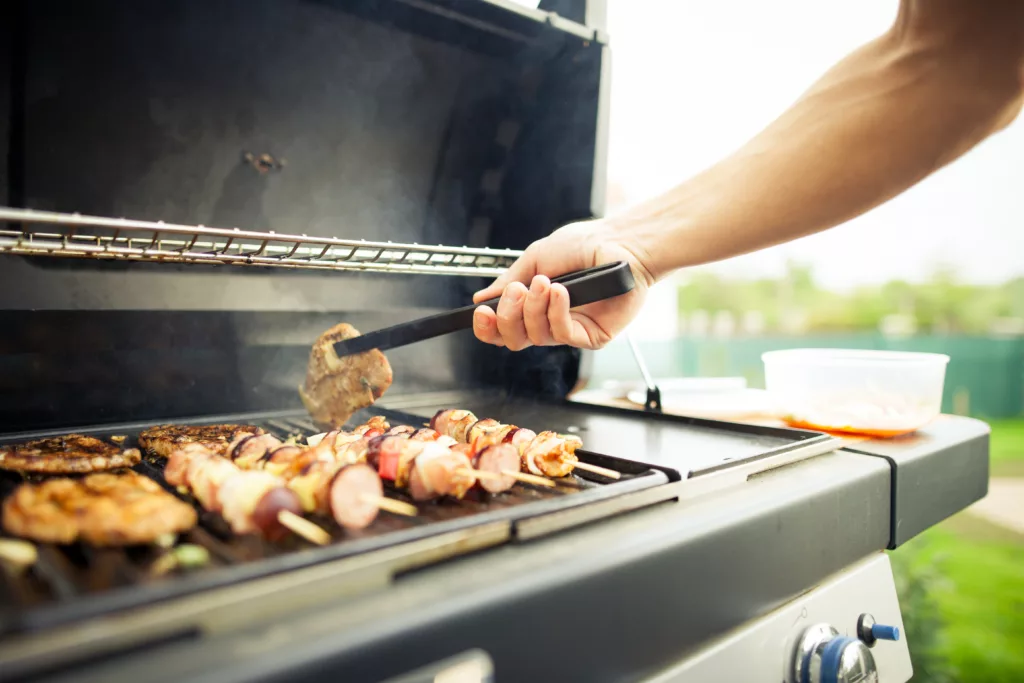How to Buy a Gas Grill: Let’s Get Cooking!

Choosing the perfect gas grill can transform your outdoor cooking experience, offering convenience and versatility that traditional grills can’t match. Whether you’re a casual griller or a barbecue enthusiast, this guide will help you navigate the myriad of options to find the grill that best suits your needs.
Determine Your Grilling Needs
Before diving into the world of gas grills, consider the number of people you typically cook for, the available space in your outdoor area, and your preferred cooking styles. This will help you determine the right size and features for your new grill.
Types of Gas Grills: Choose Your Fuel
Gas grills are not one-size-fits-all. They come in several types, each offering unique benefits. Let’s explore propane, natural gas, and portable gas grills to identify the best match for your lifestyle.
Propane Gas Grills
Widely popular for their ease of use, propane grills are great for those seeking flexibility and quick heating times.
- Portability: With wheels for easy movement, they’re perfect for rearranging your outdoor space on a whim.
- Convenience: Refillable propane tanks are available at most hardware stores.
- Quick Heat-up: Ready to grill in minutes, perfect for spontaneous cookouts.
Things to consider with a propane gas grill:
- Fuel Dependency: Propane grills require propane tanks, which means you need to keep an eye on the fuel level and have spare tanks available.
- Cost of Fuel: Propane can be more expensive than natural gas in some areas, so ongoing fuel costs may be higher.
- Limited Fuel Supply: If you run out of propane while grilling, you’ll need to replace the tank or wait until you can refill it.
Natural Gas Grills
For a more permanent setup, natural gas grills offer the convenience of a continuous fuel supply directly from your home.
- Continuous Fuel Supply: Never worry about running out of gas mid-cook.
- Cost-Efficiency: Generally cheaper than propane, reducing long-term costs.
- Convenience: Offers the ease of not changing tanks.
When evaluating a natural gas grill, you should also consider:
- Limited Portability: Natural gas grills require a fixed gas line connection, limiting their mobility within your outdoor space.
- Installation Requirements: Installing a natural gas grill may require professional assistance to connect it to your home’s gas line.
- Location Dependence: You must have a natural gas connection available near your grilling area.
Portable Gas Grills
Ideal for adventurers and tailgaters, portable gas grills bring the party anywhere.
- Portability: Light and easy to transport, they’re your go-to for outdoor activities. My portable grill has been a game-changer for tailgating.
- Versatility: Use it in various locations, from tailgates to campgrounds.
- Quick Assembly: Set up in no time, making them perfect for impromptu grilling sessions.
While portable gas grills are convenient, you should also consider:
- Cooking Capacity: Portable gas grills usually have a smaller cooking area compared to larger, stationary grills.
- Limited Features: Due to their compact size, portable grills may have fewer features and accessories compared to larger models.
- Heat Output: Some portable grills may have a lower heat output, which can affect the cooking performance for certain dishes
Choosing Your Ideal Gas Grill
Key Features
When selecting your gas grill, consider features that can enhance your grilling experience:
- Multiple Burners: For better heat control and the ability to cook different foods at once. [Example: I use my three-burner grill to cook vegetables, burgers, and warm buns simultaneously.]
- Adjustable Heat Controls: Precision is key for perfect grilling.
- Built-in Thermometers: Take the guesswork out of grilling with easy temperature monitoring.
- Side Tables and Storage Cabinets: For added convenience and organization.
Additional Features & Accessories
- Griddle Accessory: Transform your grill into a versatile cooking station. My favorite uses for the griddle accessory are cooking pancakes, eggs, and bacon, searing vegetables and seafood, and making quesadillas. The griddle accessory does requires additional storage space and requires seasoning and maintenance to prevent rusting.
- Sear Burner: Achieve that perfect sear on steaks with intense, direct heat. I use the sear burner to put the perfect sear on steaks and pork chops.
- Pizza Stone: For a crispy pizza crust, mimicking a brick oven’s effects. Homemade pizza nights have become a family favorite!
- Smoker Box: Add a smoky flavor to your meats and vegetables, enhancing your dishes’ taste. The smoke intensity will vary depending on the grill design as most gas grills are not air tight and smoke escapes unlike a true smoker.
Quality and Durability
Invest in a grill made from high-quality materials like stainless steel or cast aluminum to ensure durability and longevity. My stainless steel grill has braved four seasons with minimal wear.
Safety Considerations
Choose grills with reliable ignition systems, flame tamers, and secure gas connections to ensure a safe grilling experience. Additionally, always follow the manufacturer’s instructions for safe operation, including proper assembly, usage, and maintenance guidelines.
Budget and Warranty
Balance your desired features with your budget, and don’t overlook the value of a good warranty. A solid warranty can save you from future headaches. Opting for a grill with a 10-year warranty provided me peace of mind against manufacturing defects.
Get Ready to Grill!

With these insights, you’re well on your way to selecting the perfect gas grill for your outdoor cooking adventures. Remember, the best grill for you depends on your specific needs and preferences.
For more grilling tips and tricks, stay tuned to this blog. If you have any questions or would like to share your favorite gas grill features, drop a comment below!
Happy grilling!
Jenn in the Outside